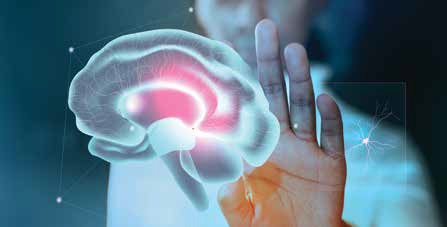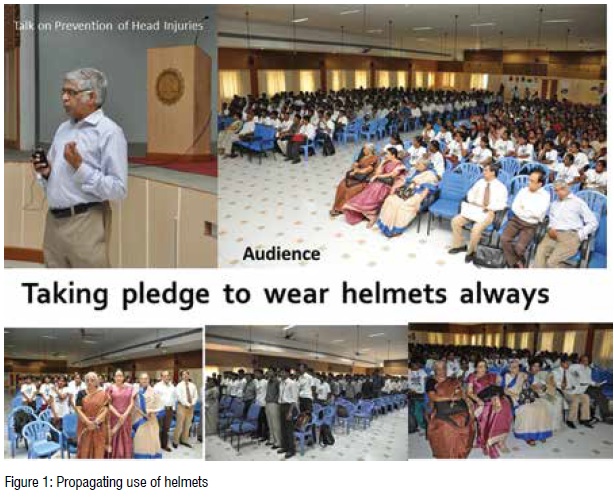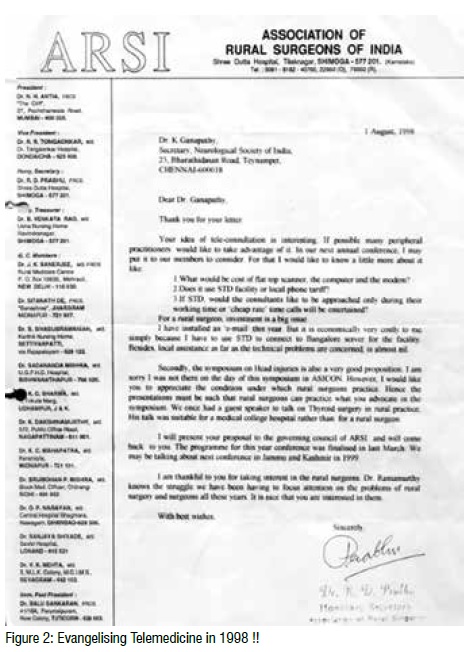I was taken aback when an MNC with 4000 + employees GS Lab | GAVS https://www.gavstech.com/gs-lab-and-gavs-join-hands/ asked me to virtually address their monthly Galvanizer Meet of senior executives across different continents. The surprise was with the topic given – not the invite per se. I was asked to share the Story of My Life emphasising how to develop empathy and care to others, handle tough life situations and obsess on excellence in whatever we do. Since 1975 as of date I have presented 592 papers in national and 193 in International conferences but this was the first time I was asked to talk about my personal story!! The Q&A session following the talk (https://) indicated that the audience of 196 were genuinely interested in what they heard – hence this attempt at sharing my personal experience with a larger audience

I was taken aback when an MNC with 4000 + employees GS Lab | GAVS1 asked me to virtually address their monthly Galvanizer Meet of senior executives across different continents. The surprise was with the topic given – not the invite per se. I was asked to share the Story of My Life emphasising how to handle tough life situations and obsess on excellence in whatever we do. Since 1975 as of date I have presented 592 papers in national and 193 in International conferences but this was the first time I was asked to talk about my personal story! The Q&A session following the talk2 indicated that the audience of 196 were genuinely interested in what they heard — hence I agreed to share my personal story with a larger audience
In 1961 studying in 6th grade I displayed skills as a entrepreneur by starting a paid magazine “The Bedean Times”. I published six issues before closing down. Topping the class in every exam till the 11th grade I was a regular contributor to the school magazine culminating in an article “St Bedes in 2064”3, not realising that I would develop an interest in Space Medicine and perhaps in my lifetime actually witness interplanetary travel. On August 3rd 1966 while in the 11th grade I got the news that my elder brother had met with a fatal scooter accident. Going on 16, that minute I decided I would become a doctor and save the whole world. The rest as they say is history!
Interested in research, I published papers as an undergraduate student4 and represented the state of Tamil Nadu at the National Science Fair. Indira Gandhi the then Prime minister of India spent 3 minutes looking at the 12 white mice with transplanted skin which I had brought with me. I had used chloroquine as an immunosuppressor. Fifty years later, chloroquine was initially recommended in managing the Corona Virus! Represented MMC in inter collegiate dramatics and debates bringing encomiums and accolades. On Nov 7th 1972 while studying for the University exam –got the news that my eldest brother also had met with a fatal scooter accident. Decided to become a Neurosurgeon and stay back with my devastated parents.
To do a five year post graduate course in 1975, after 6.5 years for a basic MBBS was a herculean task particularly as there was no stipend then. From 1976 Prof. Kalyanaraman my principal mentor ever since, employed me as his assistant to look after his private patients. In addition to Rs. 500 a month initially, I was also paid for assisting him in surgery. I would leave home at 5.15AM, do rounds in the nursing home, examine 10 plus patients, make meticulous entries in the case records and then reach the Institute of Neurology, Madras Medical College by 7.45 am. As a post graduate student I had to look after about 30 patients, many of them unconscious. Knowing that I had dabbled in research projects, Prof B. Ramamurthi also appointed me as a Senior Research Fellow in an Indian Council of Medical Research project. I held three positions concurrently: Post graduate, SRF and Private Assistant to Dr Kalyanaraman. I would be working almost 90 hours a week including most Sundays and sleeping at home four to five days a week.
In 1980, after a five year residency, I got the coveted Masters Degree in Neurosurgery from the Madras University. The next year I became the second in India to be certified in Neurosurgery by the National Board of Examinations Govt. of India. In 1984, I was encouraged to work for a Ph.D — easier said than done! I was now an Asst. Professor of Neurosurgery. Multiple visits, multiple times to the Director of Medical Education and the Health Secretary for permission to register for a Ph.D fell on deaf ears. Finally, to get rid of me the Health Minister acquiesced. A few weeks later I was transferred to a medical college with non-existent facilities. I persisted and got transferred back to MMC. Performing CT scans plain and repeat at 10mts, 1hr, 3hr and 24 hrs after contrast and take volumes of print outs for 250 patients, in a very busy government hospital was a herculean task. My Ph.D thesis was prepared using a dot matrix printer in 1989. The regulations had mentioned typed paper! A few weeks were spent convincing the Controller of Examinations and the Registrar of the Madras University to still accept the first computer printed Ph.D thesis submitted to the Madras University!
During my residency, my brother-in-law also passed away and I had to look after my elder sister, as she had no children. Even today I believe that it was my parents and elder sister who “looked after me” till I was 55. Living in a joint family with four generations in the nineteen eighties, was an incredible experience. The tremendous family support enabled me to be a guest at home and concentrate on neurosurgery. Normally one becomes Secretary of a National and International professional medical society when one is a dean/ director or at least HoD with staff and students to help. I was however “just” a consultant in a corporate hospital My wife however ensured that I ran these societies of 3500 + members with a clock work precision. Hence I was reelected for a second term of three and four years respectively.
Starting 1975, I presented papers at almost every conference and gradually made my presence felt. Assisted Prof Kalyanaraman as part of the core team which introduced India’s first formal Continuing Medical Education (CME) programme — words unknown then. From Member Executive Committee, to CME Coordinator, Secretary and President was responsible for starting the first website5 of a professional society in 1996.
I demonstrated that operation outside the theatre saves more lives, by impleading myself in a PIL (Public Interest Litigation). Arguing before a division bench of the Madras High Court6 I helped in drafting Section 136 of the Motor Vehicles Act compulsory. Scores of talks were given in schools (Figure1), colleges, rotary clubs and Lions Clubs espousing the use of helmets. Articles were published in the print media. Message on Wearing Safety Helmets was telecast on closed circuit TVs @ Chennai Central station in April 2006 for 3 days so tens of thousands were at least exposed to the message.
Thirty-eight years ago, along with ten others we decided to make medical literature easily accessible, particularly to clinicians in suburban and rural India. We made available relevant, affordable reprints at their place of work using photocopying and the postal service. Disseminating medical literature and knowledge in India in the 1980s: the SMLRT story was published last year as a historical vignette.7
December 25th 1995 was indeed an unforgettable day for me. Facilitating8 the first multiple organ transplant led to an emotional involvement with brain death certification and later on with death itself. Death was my constant companion for 40 years. I would have personally certified at least 2600 deaths. Several have had a permanent influence on me. These included nine deaths in the neurosurgery department encountered on Diwali day 1978 at the Govt General Hospital. How does one explain to a retired Professor of Surgery with multiple disseminated secondaries that no management can postpone the inevitable. How does one tell 70-year-old children that their 92-year-old mother, unconscious for three months, cannot legally have active euthanasia. At the same time I did everything humanly possible to keep a father alive so that the daughter’s marriage could take place. A terminally ill pregnant woman was kept alive to save the unborn.

When one of my students became my boss I had no problem. When my student’s student got promoted 16 years after I qualified, I reluctantly resigned from government service (promotion depends only on your Government Service Commission. No Doctors senior to me in government service joining neurosurgery 10 years later got promoted even though I had more publications and presentations than all of them put together.) Starting the first Stereotactic Radiosurgery (SRS) Unit in South Asia in May 1995 at the Apollo Speciality Hospitals Chennai was a difficult task. Colleagues suggested that lack of confidence in doing difficult long surgical procedures was the reason why I was getting into a non-invasive neurosurgical option. Decades later most aggressive neurosurgeons accepted that SRS was the treatment of choice in specific situations. In 2008 I became the first neurosurgeon in South Asia to be formally trained in Robotic Radiosurgery with the Cyberknife. It was a stupendous task to do SRS for cerebral AVMs (Arterio venous malformations) as I had to shift the patient with a stereotactic frame fixed on the head 5 km across the busiest road in Chennai from one hospital ( with Cath Lab) to another hospital which housed the Linear Accelerator. Organised the national conference of the Indian Society for Stereotactic and Functional Neurosurgery in 2011 at Chennai and was elected President of ISSFN (2011 to 2013).
In 1998, I first heard the term “Telemedicine” and got hooked to it. (Figure 2) Competing with my legally wedded spouse and my first love Neurosurgery, Telemedicine became a competitor. Twenty-five years have elapsed. Initial infatuation has become a passion. Neurosurgery has given way to Telehealth. First in South Asia to start and develop Clinical Telemedicine in 2000, responsible for initiating Telemedicine in the Armed Forces of India in 2002 starting a Telehalth technology Course with Anna University and so on, some enterprising journalist even called me Father of Telemedicine9. Today several of the Founding Fathers have given way to the Next Generation.
In 2005 we carried out proof-of-concept validation studies on the deployment of VSAT enabled fully equipped Hospital on Wheels (HoW). The entire team was concentrating on the vehicle, its contents and the satellite communication infrastructure. Not enough attention was paid to the low lying branches of trees and the quality of the mud roads in the villages where the HoW was to ply. Of course, we learnt the hard way that branches of trees would hit the VSAT changing its apogee and perigee! Subsequent VSAT receivers were made much smaller and even portable so that it could be fixed when required.
Erricson had requested me to carry out a clinical study of wireless transmission of heart sounds, ECG etc. when 3G was just becoming available. Arrangements had been made for a back-up generator as standby Due to a totally unexpected major mishap at the Tamil Nadu Electricity Board, the diesel in the generator was insufficient. It would take too long to get more diesel. The nearest source was 30KM away and it was a Sunday. Thinking on my feet I used the diesel from the Hospital on Wheels and from two other vans to tide over the crisis.

Today, India should no longer talk of achieving world-class. The world should talk of achieving India class. We should not follow high standards — we should set them. As a society we have commenced projecting our image overseas. “Made in India” is on its way to becoming a superbrand. Coming together is a beginning, staying together is progress, and working together is success. The starting point of success is to move away from the comfort zone. Discontent can actually be a motivator. An innovator is one who does not know, that it cannot be done. An innovator is also the one, who sees what everyone sees, but thinks of what no one else thinks. Our activities should not be confined to just improving our individual professional competence. We are part of the community. The community’s problems therefore are our problems. It has been my privilege in the last five decades to have had a wonderful journey. Having been trained in the BC era I sincerely hope that technology will only be used as a means to an end and not an end by itself. Tender Loving Care should continue to be the clinician’s s mantra. What matters most is how one sees oneself. Never stop learning, because life never stops teaching. Our eyes are placed in front because it is more important to look ahead than look back. 72 is when one starts unlearning, relearning and getting future ready. Optimism is the name of the game. Those of us born at the commencement of the fifties now have the maturity to understand that AI will never ever replace natural NI — after all there is nothing artificial about our neurons. NI using AI judiciously would be a wonderful combination.
Addendum: The little that has been done was possible only because of the amazing family support received over the last 8 decades !! led by the CEO par excellence of Ganapathy Pvt Ltd !! - my spouse Vijayalakshmi - who made it possible for me to do what I want to do. Saying "Thank you" somehow seems so hopelessly inadequate.
References:
1 https://www.gavstech.com/gs-lab-and-gavs-join-hands/
2 https://www.youtube.com/watch?v=3sG6Dj2brSY
3 https://www.innovaspace.org/blog/st-bedes-in-2064-ad
4 https://pubmed.ncbi.nlm.nih.gov/4402191/10
5 https://neurosocietyindia.com/
6 https://www.thieme-connect.com/products/ejournals/abstract/10.1016/S0973-0508%2807%2980002-5
7 https://www.ncbi.nlm.nih.gov/pmc/articles/PMC8830371/
8 https://www.itnnews.co.in/indian-transplant-newsletter/issue6/A-Gift-of-Life-143.htm
9 https://www.google.com/search?q=Father+of+Telemedicine+India&rlz=1C1CHZN_enIN1027IN1027&oq=Father+of+Telemedicine+India&aqs=chrome..69i57j33i160l4.14020j0j15&sourceid=chrome&ie=UTF-8